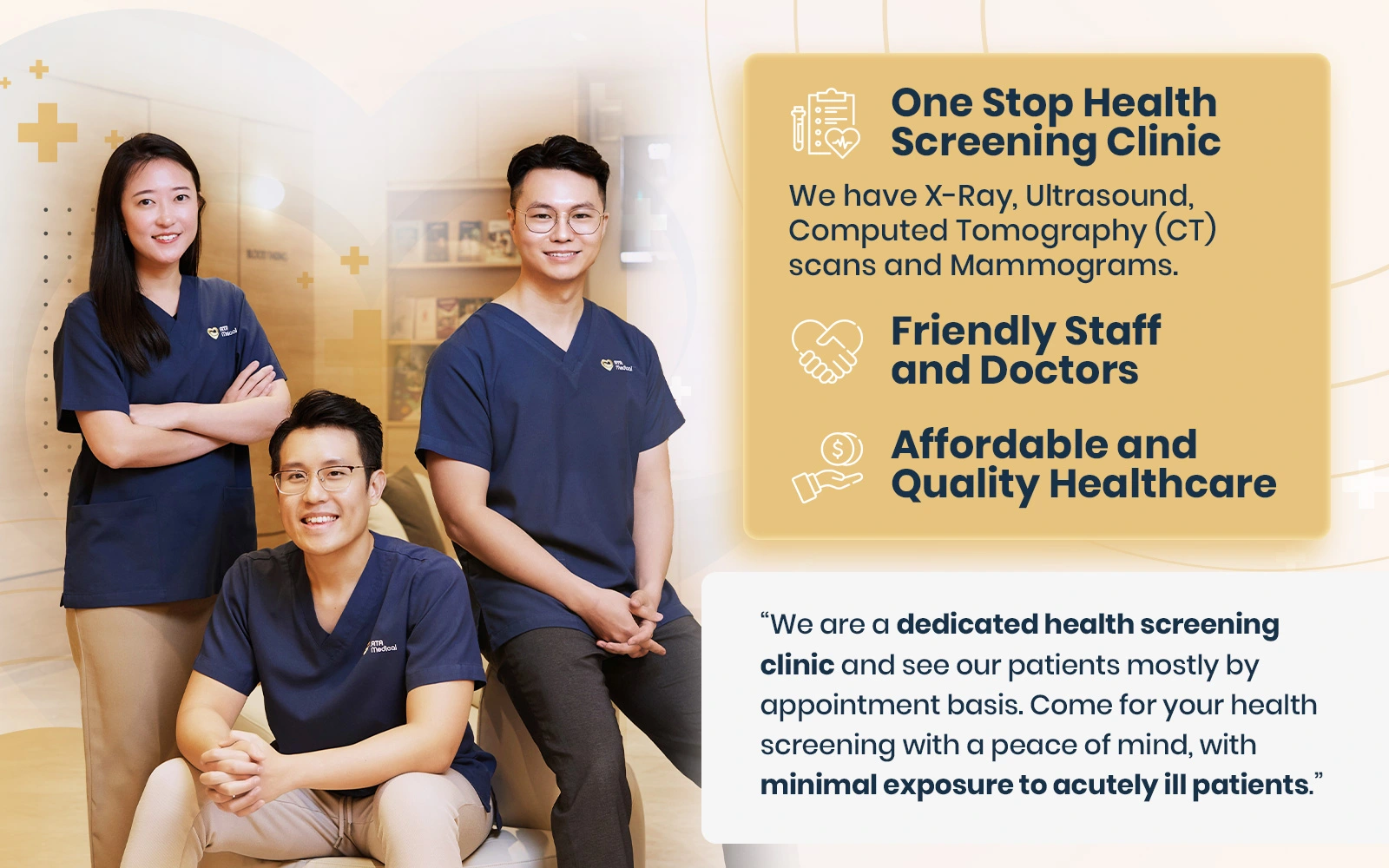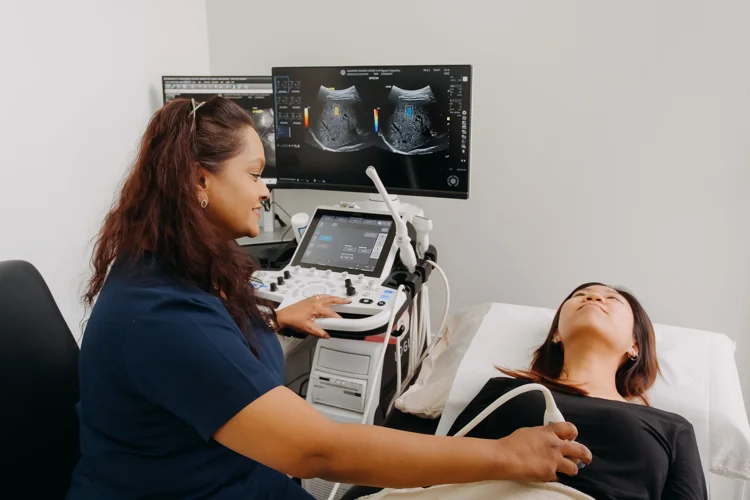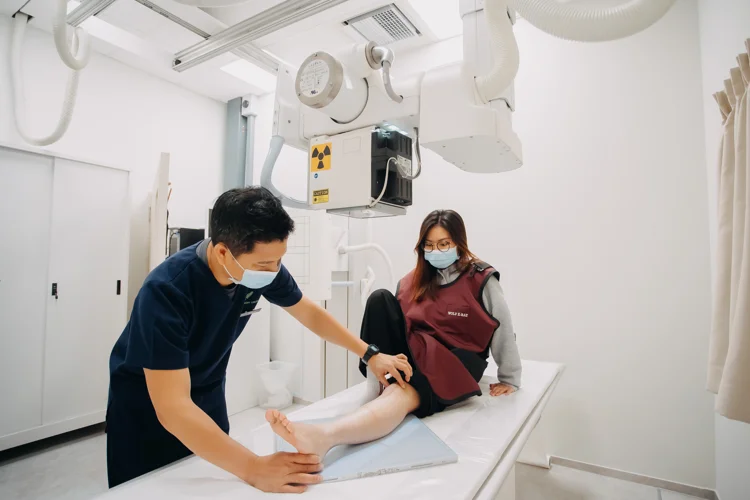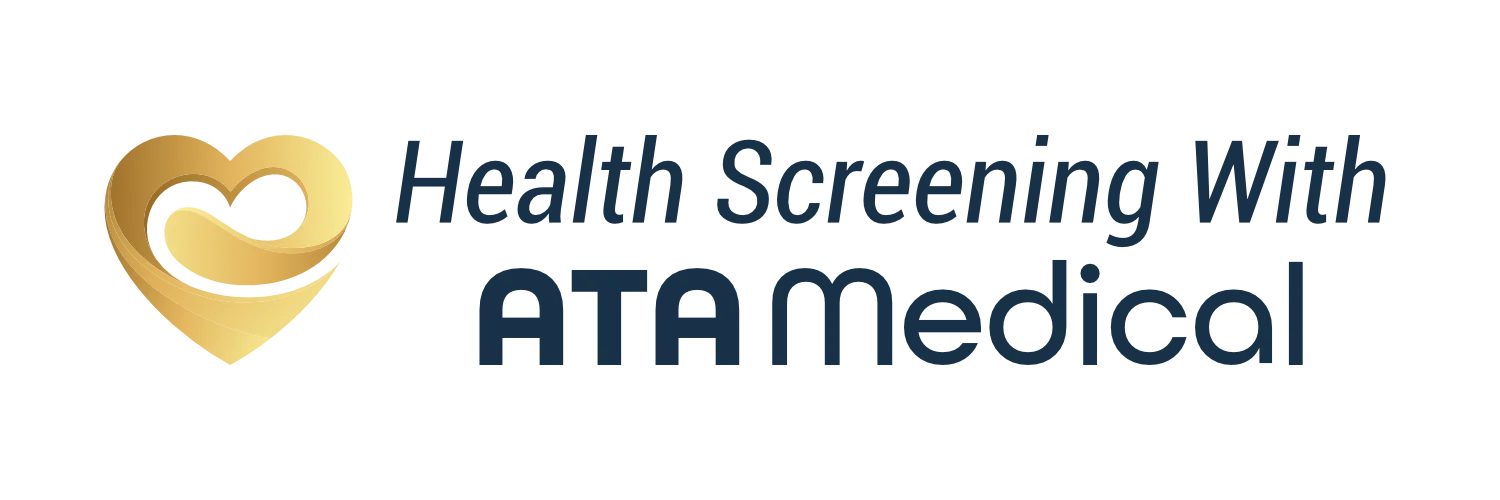Stroke Screening
What Is Stroke Screening?
Stroke screening is important for identifying risk factors or early signs of
cardiovascular issues that could lead to a stroke.
It typically involves evaluating your personal health risks, lifestyle factors, and medical test
results to detect conditions that may increase the likelihood of stroke, such as high blood
pressure, diabetes, or narrowing of the arteries.
Screening helps you take proactive steps to reduce risk through lifestyle changes or medical
management.
At healthscreening.sg, we offer a range of tests for cardiovascular health and stroke
risk assessment, with consultation fees starting from $49.05.

Why Is Stroke Screening Important?
Stroke screening is important because stroke often develops silently without early
warning signs. By detecting underlying conditions early, screening enables timely
intervention that can lower the risk of a stroke.
The World Stroke Organization estimates that one in four people may experience a stroke
in their lifetime. In Singapore, stroke is a major cause of death, with cardiovascular diseases
responsible for about one-third of all deaths in 2022. Many survivors live with long-term
disability and reduced quality of life.
Regular screening helps with early detection, making it an important step in prevention.

What Are the Types of Stroke?
There are three main types of stroke, each with different causes and implications:
Ischaemic Stroke
The most common form, occurring when a blood clot blocks an artery in the brain and reduces oxygen supply. The blockage may be due to a clot forming within the artery itself (thrombus) or one that has travelled from another part of the body (embolus).

Haemorrhagic Stroke
Less frequent but often more serious, this type happens when a blood vessel in the brain ruptures and causes bleeding. It is commonly linked to uncontrolled high blood pressure or weakened vessel walls such as aneurysms.
Transient Ischaemic Attack (TIA)
Sometimes called a "mini-stroke," a TIA results from a brief disruption of blood flow to the brain. Symptoms resemble those of a stroke but resolve within minutes to hours. TIAs should be treated as warning signs of a potential future stroke.
Who Should Consider Stroke Screening?
Stroke screening is especially relevant for people with certain health conditions or lifestyle factors that increase their risk. These include:
- Chronic Conditions – High blood pressure can weaken blood vessels, while diabetes and high cholesterol promote plaque build-up in the arteries, raising the chance of blockage or rupture.
- Heart Rhythm Disorders – Atrial fibrillation causes the heart to beat irregularly, which can lead to clots forming and travelling to the brain.
- Smoking – Tobacco damages blood vessels, increases clotting, and raises blood pressure, all of which contribute to stroke.
- Obesity and Inactivity – Excess body weight and limited exercise contribute to chronic diseases that heighten stroke risk.
- Age and Sex – Likelihood of stroke doubles every decade after age 55. Men face higher risk overall, though women often experience more severe outcomes.
- Family History – A history of stroke or cardiovascular disease among close relatives can increase risk due to genetic and shared health factors.

What Tests Are Used for Stroke Risk Screening?
Stroke screening often combines a review of your medical history, a physical examination, and targeted diagnostic tests. The following are commonly used:
| Test | Purpose |
|---|---|
| Blood Tests | Check for conditions such as high cholesterol and diabetes, which contribute to stroke risk. They can also monitor how well treatment or medication is working. |
| Electrocardiogram (ECG) | Records the heart’s electrical activity to identify irregular rhythms such as atrial fibrillation, a common cause of stroke-related clots. |
| Carotid Intima-Media Thickness (CIMT) Ultrasound | Measures the thickness of the inner walls of the carotid arteries to detect plaque build-up and early arterial disease. |
| 2D Echocardiogram | Uses ultrasound imaging to assess the heart’s structure and detect blood clots or abnormalities that may increase stroke risk. |
| CT Calcium Score | Calculates the amount of calcium in the coronary arteries; higher scores indicate greater risk of atherosclerosis and stroke. |
| CT Coronary Angiogram | Produces detailed images of coronary arteries to reveal narrowing or blockages that could reduce blood supply to the brain. |
| Brain CT Scan | Provides cross-sectional images of the brain to identify bleeding, blockages, or aneurysms linked to stroke. |
| Magnetic Resonance Imaging (MRI) | Creates high-resolution images of brain tissue and blood vessels, useful for detecting small or early strokes and assessing existing damage. |
How Often Should You Screen for Stroke Risk & Heart Health?
The frequency of stroke and heart health screening depends on your individual risk
factors. People with conditions such as high blood pressure, diabetes, or raised
cholesterol may require more regular reviews, while those at lower risk can be screened less often.
It is advisable to consult a doctor who can determine an appropriate schedule tailored to your age,
family history, lifestyle, and overall health.
How Much Does Stroke Screening Cost in Singapore?
At healthscreening.sg, we provide a range of cardiovascular screening tests that also help assess your risk of stroke:
| Test | Price* |
|---|---|
| Consultation | From $49.05 |
| Blood Tests & Profiles | |
| Apolipoprotein B | $32.70 |
| Lipoprotein (a) | $59.95 |
| Homocysteine | $74.12 |
| HsCRP | $38.15 |
| Fasting Insulin | $66.49 |
|
Essential Lipid Profile: Full Cholesterol Test (Total, LDL, HDL, Triglycerides, HDL Ratio) |
$21.80 |
|
Cardiac Screening 3: Essential Lipid Profile + Apolipoprotein B (ApoB) + HsCRP |
$63.22 |
|
Cardiac Screening 4: Cardiac Screening 3 + Homocysteine + Fasting Insulin + Glucose Note: Fasting is required for accurate results of Fasting Insulin and Glucose. |
$172.22 |
| [Optional] Mobile Blood Drawing Service | $54.50 (per location up to 5 pax) |
| Specialised Tests & Imaging | |
| Electrocardiogram (ECG) | From $49.05 |
| Treadmill Stress Test with ECG | From $218 |
| Carotid Intima-Media Thickness (CIMT) Test | From $163.50 |
| 2D Echocardiogram | From $436 |
| CT Calcium Score Test | From $381.50 |
| CT Coronary Angiogram | From $1329.80 |
| CT Coronary Angiogram | From $1329.80 |
| Brain CT Scan | From $577.70 |
| Brain MRI Scan | From $1068.20 |
*Prices are NETT and inclusive of GST.
You can also consider our health
screening packages, which can provide a more comprehensive assessment of your overall health.
Find Stroke Screening Near Me
Why Choose Us?








Navigate Easy With Google Maps
Health Screening Singapore (Anson House)
Nearest MRT: EW15 Tanjong PagarHealth Screening Singapore (Camden Medical Centre)
Nearest MRT: TE13 Orchard BoulevardHealth Screening Singapore (CPF Jurong Building)
Nearest MRT: NS1/EW24 Jurong EastFrequently Asked Questions (FAQ)
When a stroke is suspected or has just occurred, urgent imaging tests such as a brain CT or MRI are used to confirm the diagnosis and determine whether it is caused by a blockage or bleeding. For assessing long-term risk, other tests such as blood tests, electrocardiograms, carotid ultrasounds, and echocardiograms help identify conditions like high cholesterol, atrial fibrillation, or narrowed arteries. Consulting a doctor can guide which tests are most suitable for your individual risk factors.
The warning signs of a transient ischaemic attack (TIA), or mini stroke, include sudden weakness or numbness, trouble speaking, vision changes, dizziness or loss of balance, and severe headache. Because symptoms resolve quickly, medical evaluation is needed to confirm a TIA. Tests such as brain imaging, carotid ultrasound, or ECG may be used to find the underlying cause. Anyone with these symptoms should seek urgent medical attention.
An electrocardiogram (ECG) cannot directly detect a stroke, but it records heart rhythms that may increase stroke risk. For example, atrial fibrillation is a common irregular rhythm that can lead to clots travelling to the brain. An ECG is therefore often included in stroke risk screening as it helps uncover conditions linked to future stroke. Further imaging tests are required to confirm or rule out an actual stroke.
Stress does not directly cause a stroke, but long-term stress may contribute to risk factors such as high blood pressure, unhealthy lifestyle habits, and heart disease. These conditions increase the likelihood of stroke over time. Occasional stress alone is unlikely to cause immediate harm, but managing chronic stress through exercise, sleep, and healthy coping strategies can support overall cardiovascular health.
The five common warning signs of a stroke are sudden numbness or weakness, confusion or difficulty speaking, vision changes, loss of balance or coordination, and severe headache. These symptoms occur when blood flow to the brain is disrupted. Immediate medical attention is essential if any of these signs appear, even if they resolve quickly, as prompt treatment can improve outcomes and reduce long-term complications.
The main causes of stroke are blocked blood vessels, leading to ischaemic stroke, or ruptured blood vessels, resulting in haemorrhagic stroke. Common risk factors include high blood pressure, diabetes, high cholesterol, smoking, heart rhythm disorders such as atrial fibrillation, obesity, and family history. These conditions damage blood vessels or promote clot formation, which interferes with normal blood flow to the brain. Managing these risks lowers the likelihood of stroke.
Stroke screening is often recommended from middle age onwards, especially for people with risk factors such as hypertension, diabetes, high cholesterol, smoking, or family history of stroke. While younger adults may not need routine screening, those with multiple risks may benefit from earlier assessment. Consulting a doctor can help determine the most appropriate age and frequency for screening based on your personal health profile and lifestyle.
A silent stroke does not cause noticeable symptoms, but small areas of brain damage may still occur and be detected on imaging tests such as MRI. Over time, multiple silent strokes can affect memory, thinking, and coordination. Because they go unnoticed, silent strokes highlight the importance of screening for risk factors like high blood pressure or atrial fibrillation, which can increase the likelihood of both silent and symptomatic strokes.
The FAST test is a simple way to recognise stroke symptoms quickly. It stands for Face drooping, Arm weakness, Speech difficulty, and Time to call emergency services. If someone shows any of these signs, urgent medical care is needed. The test helps both the public and healthcare providers act quickly, as timely treatment is crucial for reducing complications and improving recovery outcomes in stroke patients.
There is no single symptom that reliably predicts a stroke a month in advance, but some people experience warning signs such as transient ischaemic attacks (mini-strokes), brief episodes of dizziness, numbness, or vision problems. These episodes should not be ignored, as they may signal underlying vascular problems. Regular screening and medical evaluation are important if such symptoms occur, since early intervention can lower the risk of a future stroke.
